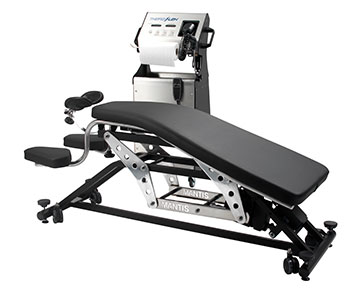
REFLEX THERAPY FAQ'S
How does Reflex Therapy differ from other forms of treatment for back pain?
- It does not involve any forceful manipulation of the joints.
- It does not generally require dozens of treatments that are both costly and time-consuming in terms of travel costs and lost productivity.
- While Reflex Therapy is not yet covered by insurance, the cost is usually less than the combined co-pay of many other treatments.
- With many forms of treatment, chronic back patients always have some degree of pain or restricted motion, never feeling 100 %. If the problems are mechanical in nature, Reflex Therapy can resolve most of them so that constant treatment is not necessary and patients can move about freely and without discomfort, enabling most to resume or begin an exercise regimen.
- Despite the fact that RT is not yet insurance coded, a course of treatment safely yields superior results in less time while reducing attrition on the joints, thus preserving the healthy life of the spine.
- Clients are generally able to reduce or eliminate pain medications. If these are prescriptions drugs, this should be done under guidance with one’s physician.
Is Reflex Therapy a form of massage?
No it is not! Though it does incorporate some elements of massage. We have reports of some claiming that the Theraflex System is just a mechanized type of massage but those who suggest this have no first-hand experience with the System and have been misinformed.
Is Reflex Therapy painful?
The first session can be uncomfortable. If one is in pain before treatment begins, part of the treatment can be uncomfortable. This quickly passes however, as the stresses are removed from the joints. By the time the course of treatment is completed, most find it relaxing.
Does Reflex Therapy involve forceful manipulation?
No, it does not. Because repeated forceful manipulation may weaken ligaments permanently, Reflex Therapy avoids that side effect by working on the joints of the spine gently and uniformly. It mobilizes rather than manipulates, allowing the natural reflex action of the muscles connected the spine to ease the joints back into their pre-injury position.
Will Reflex Therapy create a problem if used on a fully functional, healthy spine?
No, it will be like a tension-relieving, mobilizing massage. In fact, clients who have come, thinking they really have no problems but would simply like to ‘loosen up’ are often experiencing the beginnings of one or more mechanical problems that would tend to cause trouble in time. In such cases, Reflex Therapy can prevent these from becoming more serious.
Why would a person need ‘maintenance’ treatments?
Not everyone does but most do. For instance:
- A young person who experienced a mechanical injury to the spine through sport may only need one or two sessions if treated as soon as possible after the incident. Recovery for the young is normally rapid and the subject can get back to normal activity and it is unlikely they would need maintenance.
- Persons in their 50's and over who have endured years of mechanical problems may wish to have periodic maintenance treatments after their initial sessions. Those not inclined to increase their level of fitness through exercise and diet will be more likely to do so.
- Persons whose employment is a causal factor in their back problems usually will wish to have occasional maintenance treatments for the duration of their employment to counteract the stresses of the job.
- Those who spend their days at a computer often have neck pain and stiffness. Reflex Therapy can relieve this and the relief can be maintained with occasional treatments.
- Young mothers often begin having back pain following childbirth. The demands of lifting children, housework and accompanying multi-tasking may make it worse. These ladies benefit greatly with Reflex Therapy and because their activities have to continue until the demands on their bodies decrease, they will usually want to have a few treatments per year to remain supple and pain-free.
- Persons with scoliosis can receive a good deal of correction and relief through Reflex Therapy. This too can be maintained with periodic treatment.
Is exercise recommended following Reflex Therapy?
Yes. Gentle, low-impact exercise programs are suggested. A slow progressive strengthening program of the back and core muscles should be the focus. Persons who have had damage done to intervertebral discs over the years should avoid heavy lifting and high-impact exercise. Inquire about our individualized exercise program tailored to your symptoms and Theraflex treatment.
Can Reflex Therapy be used with other forms of therapy?
It is best not to mix Reflex Therapy with manual therapies, especially any type of forceful manipulation to avoid compromising the treatment. As the Reflex Therapy sessions progress, patients are advised to begin appropriate exercise.
